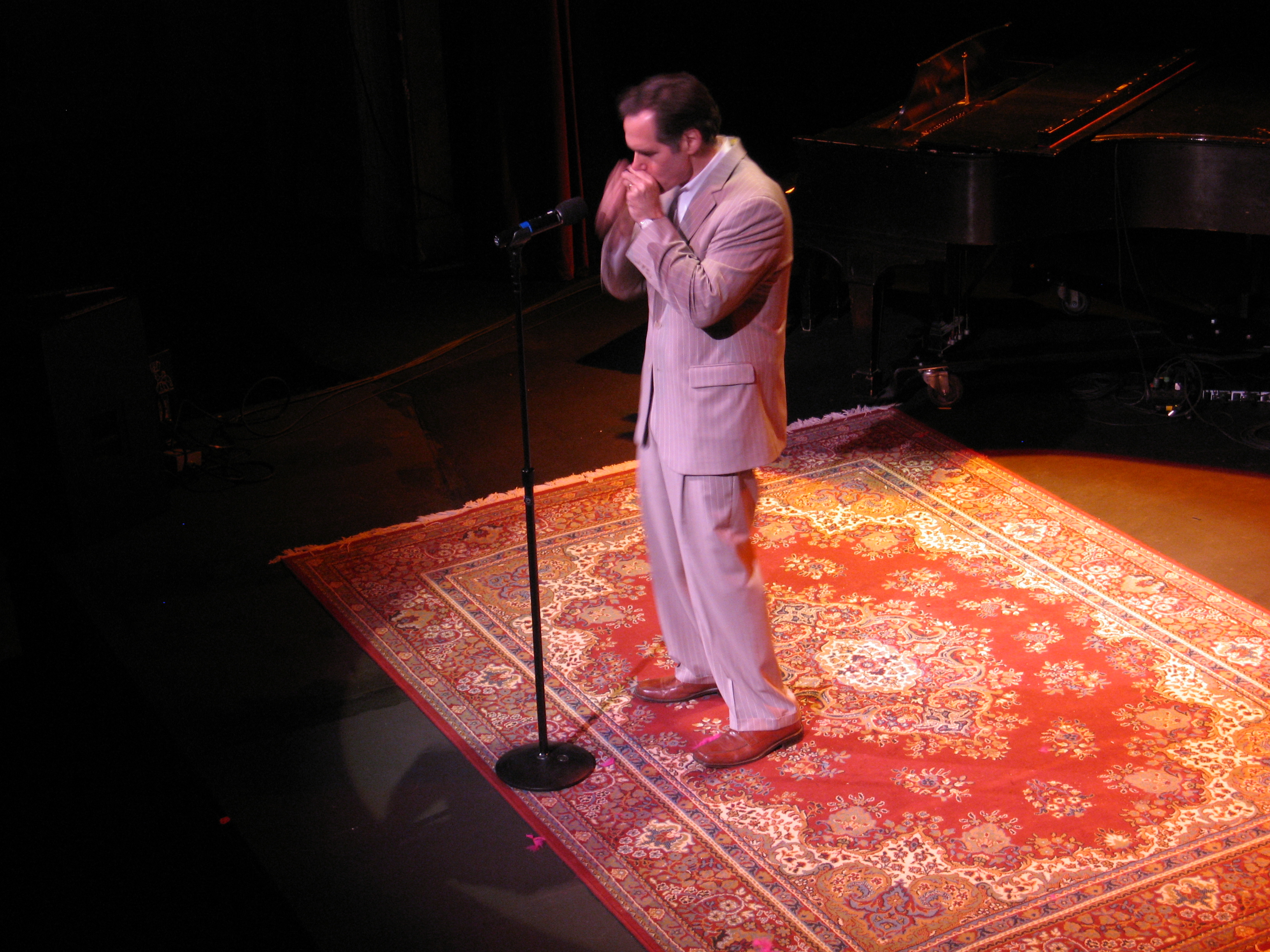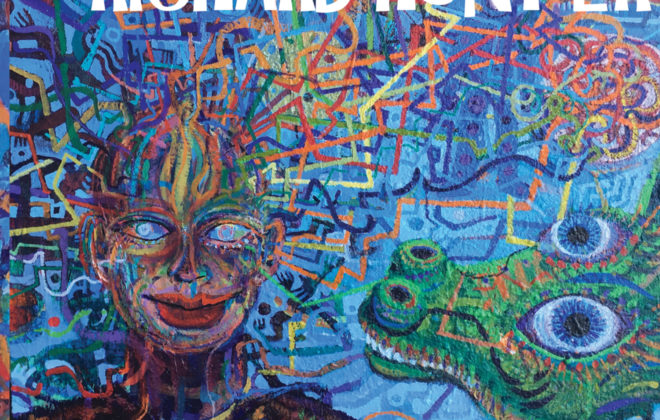
Lo Rider Solo (with Looper and 3 Digitech RPs)
I recorded this Lee Oskar song, one of my favorite jam platforms, live into my Zoom H4 at the same rehearsal where I recorded It Takes a Lot to Laugh, It Takes a Train to Cry. All the parts except the percussion loop are played with the same Seydel 1847 G harp, running through an Audix Fireball V into a setup that includes a Digitech RP255, 355, and 350, with the first RP at the end of the chain and the RP350 and 355 running in parallel.
The piece begins with the harp playing a bass line over a pre-recorded percussion loop, using a low double octave patch I created for the Digitech RP355. That’s followed by an organ-ish lead, again played through the RP355, then a looped organ chord sequence. Next up is an autowah patch playing a rhythm guitar-ish lick through the RP350. The last part is a combination of the RP255 and the RP350, with the RP350 running the autowah and the RP255 bringing the pitch up an octave. (I just realized, writing this, that I could do this all with two RPs instead of three by adding the patch I’m using on the 350 to the 355. Less gear for the same sound = good.) By the way, at 2:15, just after the combined RP350/RP255 sound makes its entrance, the contrary motion in the harmonica part is played by me, not the effects devices.
I’m singing through a Digitech Vocalist, which adds a low octave under the voice. As Hendrix said at Monterey while playing “Like A Rolling Stone,” “Yeah, I messed up the words. So what?” I’ll make it better next time fer sher…
This piece shows that you can produce a very, very rich rhythm and lead sound with a single harp, a looper, and a Digitech RP or two. Enjoy.
Related Posts
Leave a Reply
You must be logged in to post a comment.
WHAT’S NEW
Categories
- Audio/Video
- Blog
- Blue Future
- Digitech RP Tricks and Tips
- Discography, CDs, Projects, Info, Notes
- Featured Video
- For the Beginner
- Gallery
- Hunter's Effects
- Hunter's Music
- Huntersounds for Fender Mustang
- Meet the Pros
- More Video
- MPH: Maw/Preston/Hunter
- My Three Big Contributions
- Player's Resources
- Pro Tips & Techniques
- Recommended Artists & Recordings
- Recommended Gear
- Recorded Performances
- Reviews, Interviews, Testimonials
- The Lucky One
- Uncategorized
- Upcoming Performances
- Zoom G3 Tips and Tricks

